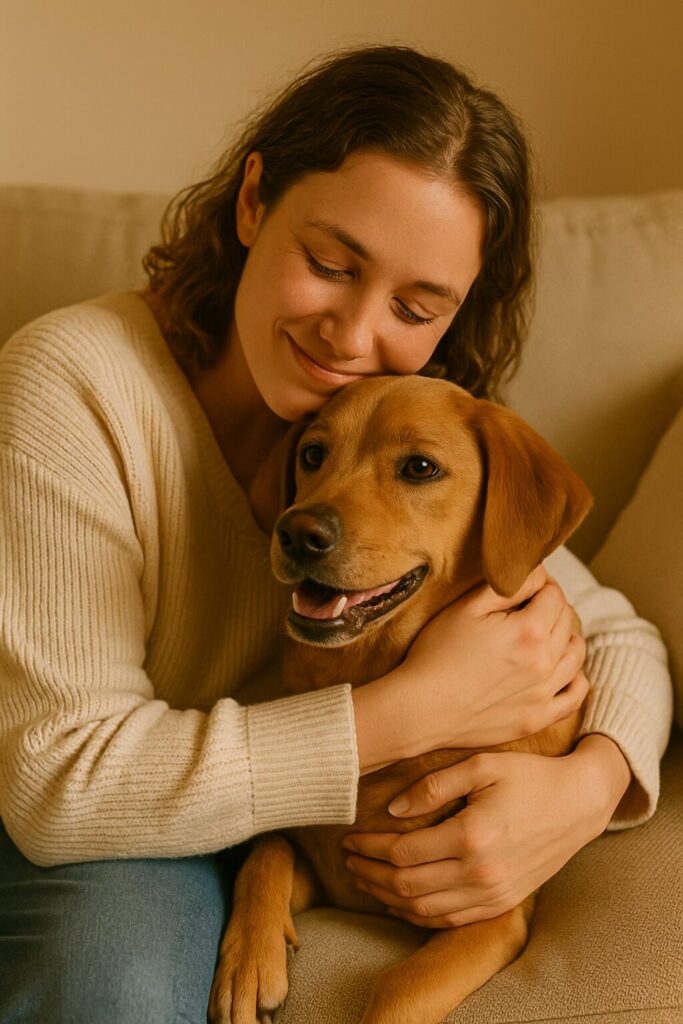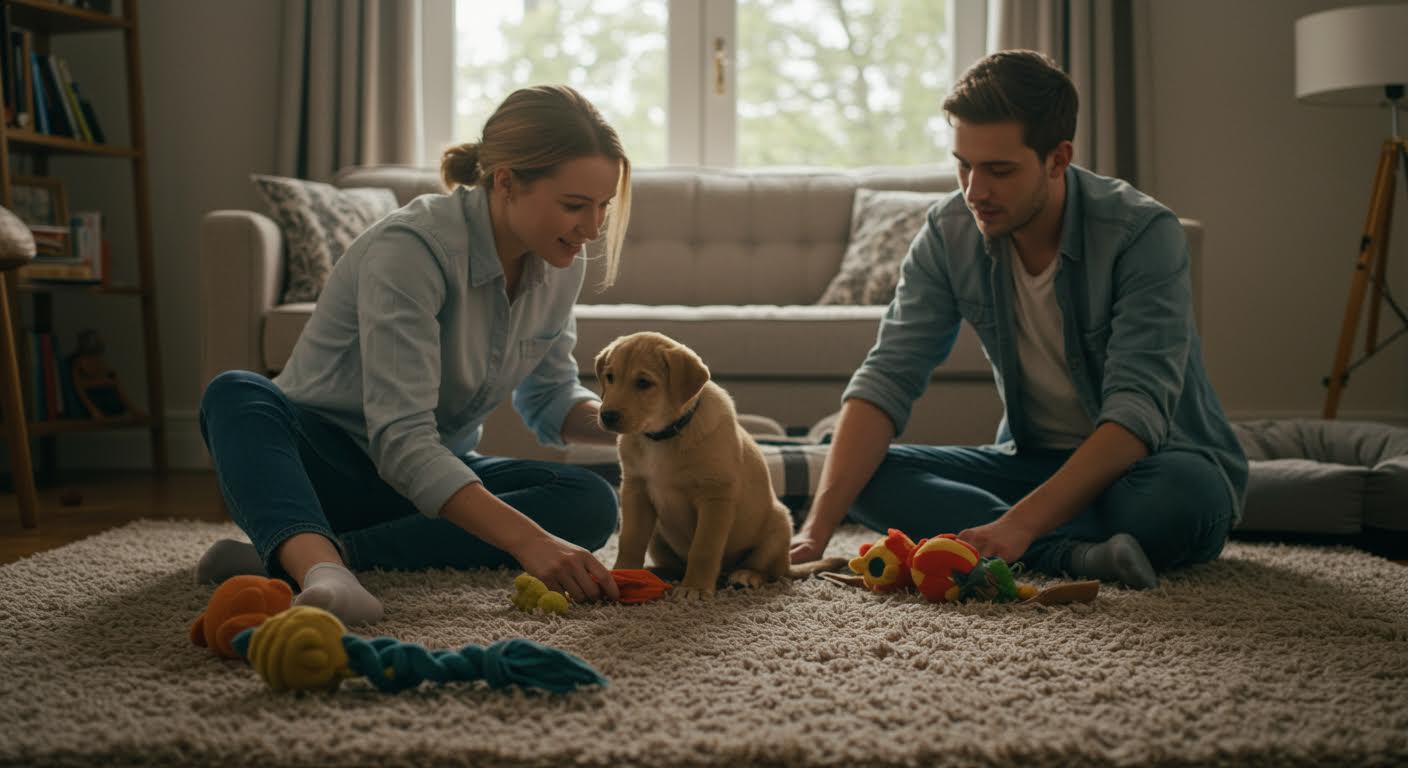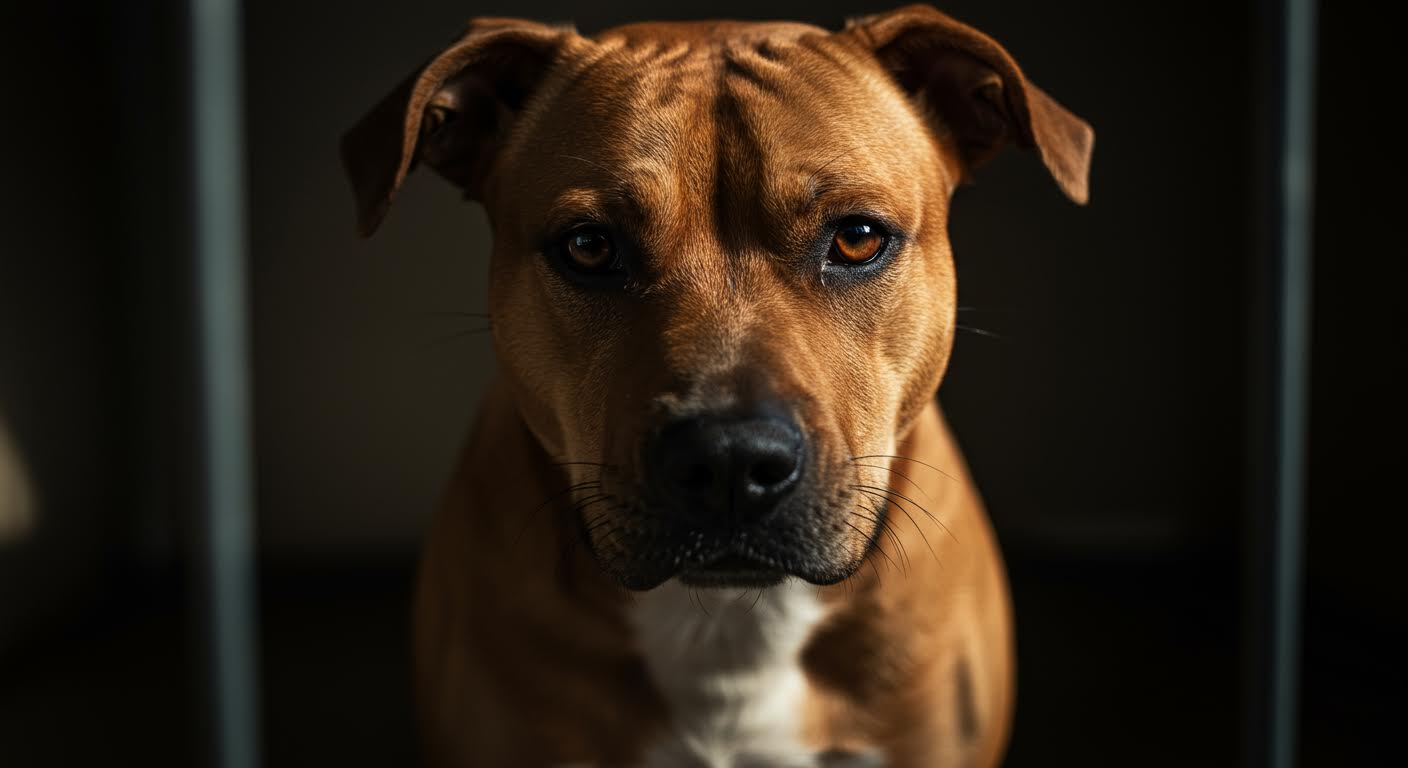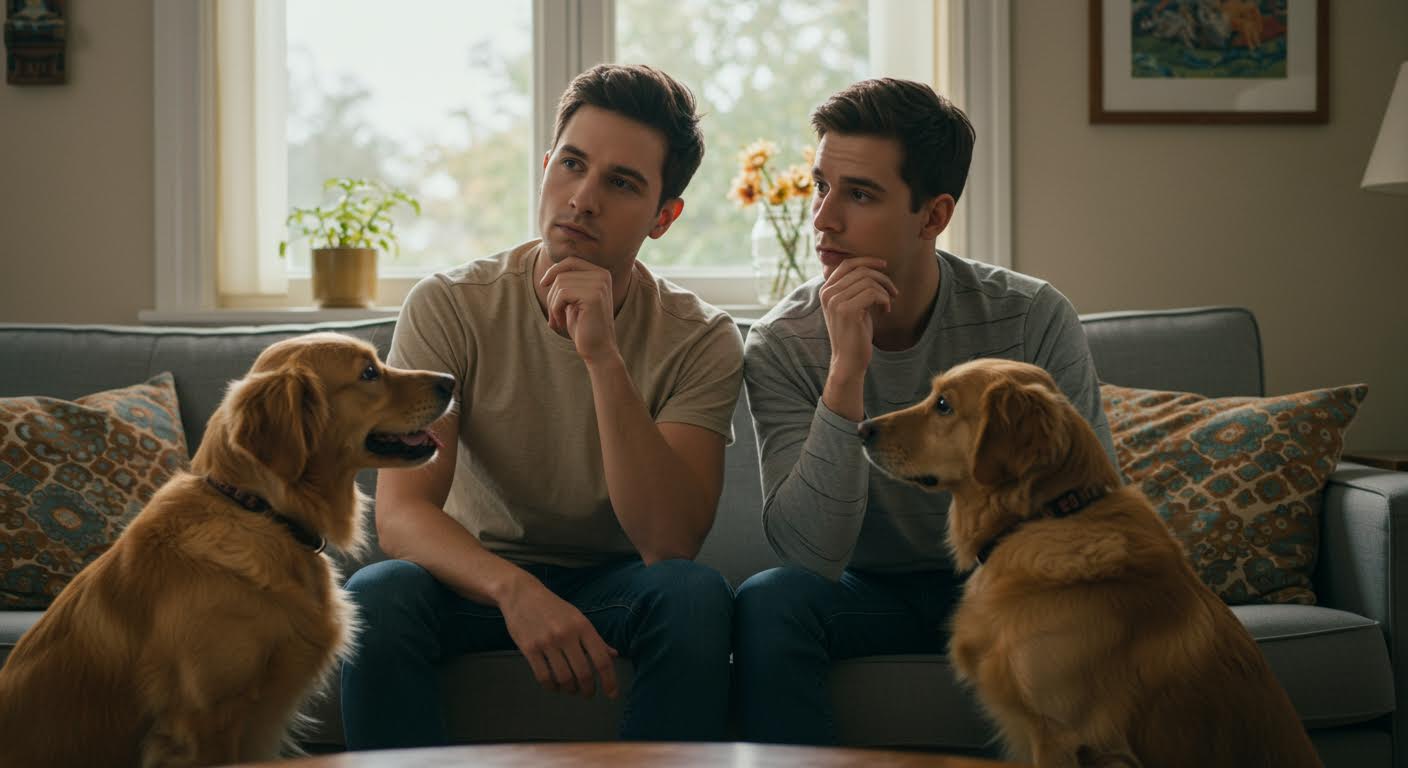10 Essential Tips for First-Time Dog Owners
Table of Contents
Welcoming a dog into your home is one of the most rewarding experiences—but it can also feel overwhelming if you’re not prepared. The transition period is often filled with excitement, challenges, and the need for patience. Whether you’re bringing home a playful puppy or adopting an adult dog, knowing what to expect and how to plan ahead makes all the difference.
Here are ten essential tips that every first-time dog owner should follow to make the journey smoother—for both you and your new best friend.
Make sure you have the right dog food
One of the first things your new dog will need is quality food. Many first-time owners overlook this step, but nutrition plays a huge role in your pet’s overall health. Always check what your pup has been eating before you brought them home. If you plan to switch brands, do it gradually—mixing small amounts of the new food with the old to avoid stomach upsets.
Consult your veterinarian to ensure the diet matches your dog’s age, breed, and health needs. Puppies need food rich in growth-supporting nutrients, while older dogs benefit from diets designed to support joint health and digestion.
Prepare a place for your dog to sleep
Dogs thrive when they have a designated safe space. Setting up a sleeping spot, like a crate or dog bed, helps them feel secure from day one. Crates may seem restrictive, but they’re actually comforting for dogs when introduced positively. They become a “den” where your pup can rest without distractions.
Place a cozy bed or blanket inside, and keep the spot consistent. This teaches your dog that they have a personal space to relax, reducing stress during the adjustment period.
Assume your dog is not housetrained
Even if your new dog is older, assume they’re not fully housetrained. Set them up for success by limiting their freedom at first—confine them in a crate, exercise pen, or gated space when you can’t supervise.
Take your pup out frequently, reward them with treats every time they go potty outside, and remain consistent. If you’ll be gone for hours, use potty pads in their space. Over time, consistency and positive reinforcement make house training smoother.
Limit how much of your home the dog can access at first
Curiosity is natural for dogs—but it can also mean chewed shoes, ripped papers, and missing socks. At the start, limit your pup’s access to only certain areas of the house. Use baby gates, pens, or closed doors to protect both your belongings and your dog.
This also helps with training, as your pup learns which areas are safe and which items are off-limits. Slowly expand their space as they earn your trust and show responsibility.
Give your dog his own “room.”
Adjusting to a new home can be overwhelming. That’s why dogs need a quiet, designated area where they can retreat and decompress. This could be the crate you set up earlier or a specific corner with a bed and toys.
If your pup voluntarily goes to this safe space, avoid disturbing them. Respecting their boundaries builds trust and helps them feel secure. Over time, they’ll see this spot as their “room” where they can relax without worry.
Come up with a routine, and stick with it
Dogs thrive on structure. A predictable routine helps them settle into their new life faster. Create a daily schedule with set times for meals, walks, play, and rest. For example: morning walk → breakfast → crate time → afternoon play → dinner → evening cuddle time.
Consistency reduces anxiety and builds trust. Even if your schedule changes slightly, keeping core routines like feeding and potty breaks consistent will make your pup feel secure.
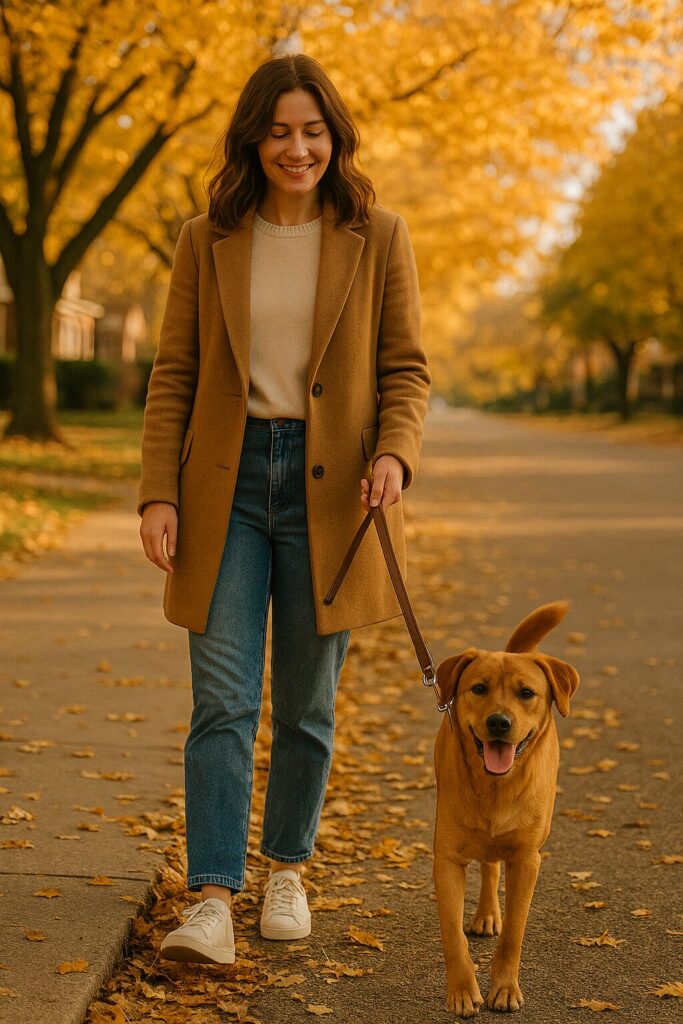
Create a calming environment
Your dog mirrors your energy. Staying calm—even when accidents or misbehavior happen—helps your pup stay relaxed. Consider tools like pheromone diffusers (Adaptil) to reduce stress during the early days.
Avoid overwhelming your pup with too many new experiences at once. Instead, introduce changes gradually and celebrate small wins. Calmness builds confidence, which makes training easier.
Remember: Patience is a virtue
The first weeks can test any dog owner’s patience. Accidents, whining, or stubborn behavior are normal as your pup adjusts. Remember, your new dog isn’t misbehaving on purpose—they’re learning.
Stay patient, redirect behavior positively, and set clear boundaries. Over time, your consistency will pay off, and you’ll see progress. The key is to think long-term: you’re building a relationship, not just training a pet.
What if my dog won’t eat?
It’s common for dogs to lose their appetite in a new environment. Start with the same food they were used to, then gradually introduce healthier options. Adding a food topper can make meals more enticing.
Set meal times, and pick up food after 30 minutes to create a sense of routine. Puzzle feeders also work wonders—they stimulate your dog’s brain while encouraging them to eat. If the problem persists, consult your vet.
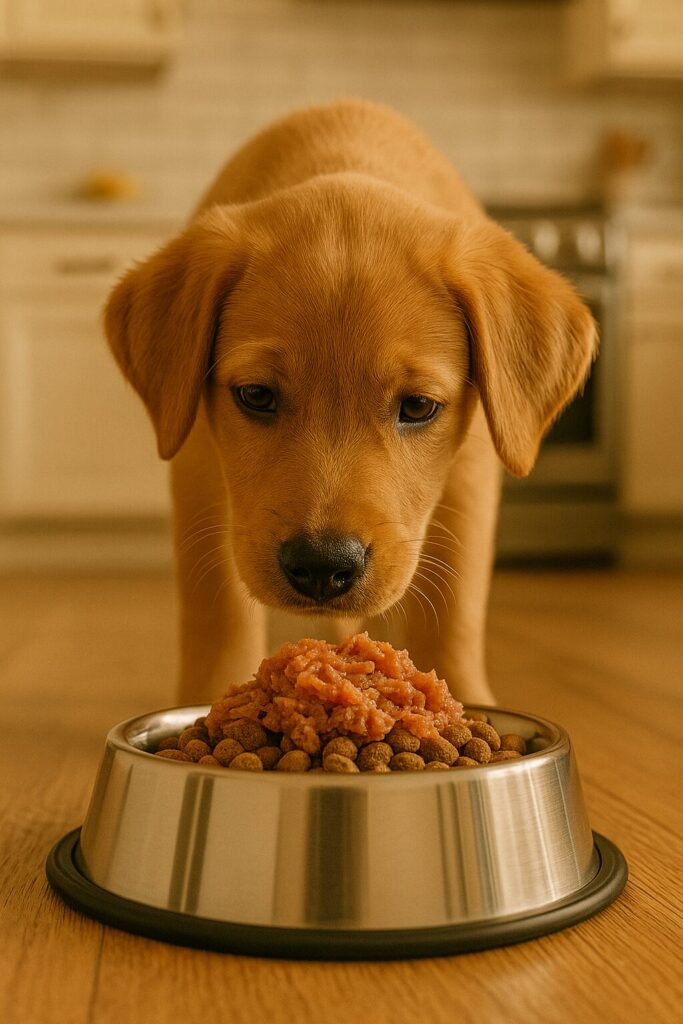
What if there’s a major problem?
Sometimes, challenges like aggression, anxiety, or housetraining issues require professional help. Don’t wait until the situation worsens—early intervention is key.
Reach out to a certified trainer or behavior consultant if you notice concerning patterns. Expert guidance can save you months of frustration and ensure your pup gets the best start in their new home.
Final Thoughts
Bringing home a dog is a journey filled with ups and downs, but the rewards are endless. With preparation, structure, and patience, your new pup will quickly settle into your family. From the right food and a safe sleeping space to creating routines and respecting their need for calm, each step makes the transition smoother.
Remember: every small effort you make today lays the foundation for a strong, lifelong bond with your furry friend. 🐾
